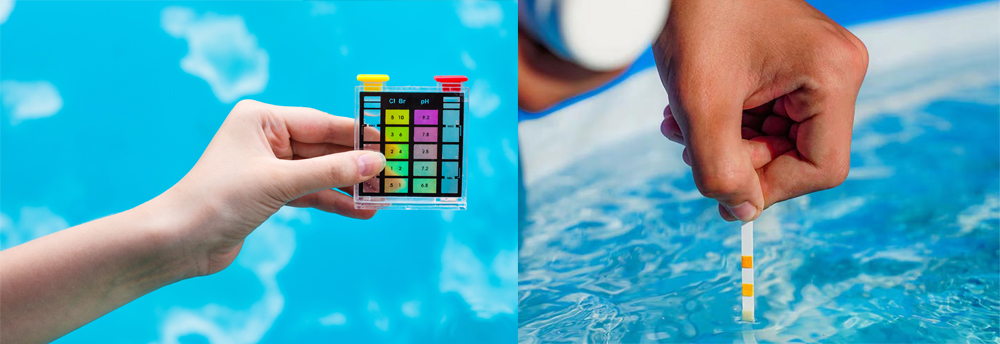Maintaining a balanced pH level in your pool is extremely important. The pH level of your pool affects everything from the swimmer experience to the lifespan of your pool’s surfaces and equipment, to the condition of the water.
Whether it’s a saltwater or chlorinated pool, the main disinfecting form is hypochlorous acid. The effectiveness of hypochlorous acid in cleaning a pool by breaking down contaminants is highly correlated to how well the pH is balanced.
What should the pH level of your pool be?
To maximize the ability of chlorine to interact with bacteria and form hypochlorous acid to kill them, the ideal pH of water should be less than 6.6, in theory. However, water with a pH of 6.6 is not suitable for swimming. It’s also important to consider the corrosive effects of water on pool surfaces.
The acceptable range for pool water pH is 7.2-7.8, with an ideal pool pH between 7.4 and 7.6. Water with a pH below 7.2 is too acidic and can sting your eyes, damage pool liners, and corrode equipment. Water with a pH above 7.8 is too alkaline and can cause skin irritation, water cloudiness, and scale buildup.
What are the effects of unstable pH?
A pH that is too low can cause etching of concrete, corrosion of metals, irritation to swimmers’ eyes, and damage to rubber seals on pumps;
A pH that is too high can cause scale to form, which can also irritate swimmers’ eyes. The bottom line is that chlorine disinfectants become less effective, and even if you maintain free chlorine levels of 1-4 ppm, you may still experience algae blooms or green discoloration of your pool water.
How to test the pH of your pool?
Because pH affects the ability of free chlorine to disinfect pool water, and pH can be unstable (especially if total alkalinity is not properly maintained), a good rule of thumb is to test pH every 2-3 days, as well as test pH and free chlorine after heavy use or rainfall.
1. Test strips are the easiest way to test the pH of your pool. Simply follow the instructions provided on the test strip container. You need to soak the test strip in the pool water for a period of time and then let it sit while the reagent on the test strip reacts with the water. Finally, you will compare the color of the pH test on the test strip to the color scale on the test strip container.
2. Many pool professionals only use test kits to test pool pH. With a test kit, you will collect a water sample in a test tube according to the instructions in the kit. Then, you will add a few drops of the reagent to interact with the water and turn the test tube upside down to speed up the reaction. After the reagent has time to react with the water, you will compare the color of the water to the color scale provided in the test kit – just like the comparison you made with the test strips.
How to stabilize pH?
The main way to prevent wild swings in pool pH and maintain the effectiveness of pool disinfection is to keep a reasonable alkalinity level. The recommended pool alkalinity level is between 60ppm and 180ppm.
If the pH is too low, you need to add alkaline compounds, such as sodium carbonate and sodium hydroxide, to make the water more alkaline. Usually, they are sold under the name “pH Up” or “pH Plus”.
If the pH is higher than normal. , you must add an acidic compound. The most common one used to lower pH is sodium bisulfate, also known as “pH Minus.” At the same time, you may also need to pay attention to your total alkalinity.
The pH level of your pool is affected by water hardness, weather, water temperature, your pool’s filtration system, the number of swimmers in your pool, and other factors. That’s why you need to monitor your pool’s pH carefully. Always have a good supply of pH adjusting chemicals to ensure your pH is where it should be, so your pool chlorine is working as intended!
Post time: Aug-07-2024


